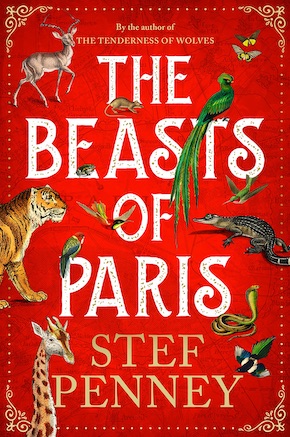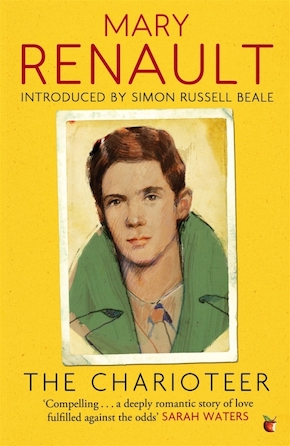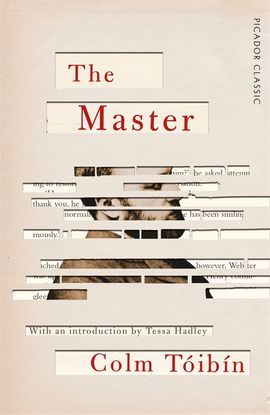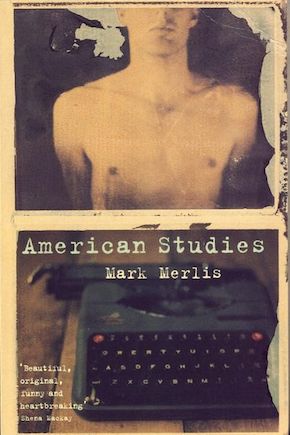Gay love stories in historical fiction
by Stef PenneyWhat was it like to be a gay man in Paris in 1870? While researching my novel The Beasts of Paris, I couldn’t find much in 19th-century writing about homosexual love, and even later there are strangely few literary, queer, period-set love stories (shout outs to Sarah Waters and Mary Renault), so I’m pushing the boundaries of both ‘love story’ and ‘historical’ here. All I found in 19th-century accounts is an occasional minor character – e.g. in Zola’s Nana – or documentary reports of police raids, or porn (thank you, Jack Saul). I delved into novels, paintings and photographs as well as history. And if my historical period stretches from Ancient Greece to the early 1950s – well, you take what you can get.
—
Maurice by E.M. Forster
The daddy of all gay love stories. Although written in 1913, Forster’s book was not published until after his death, in 1971. He was inspired to write it after meeting the writer and activist Edward Carpenter and his long-term partner George Merrill. It’s a deeply sympathetic picture of a man who experiences intense passion, first with his closeted best friend Clive, and then, after Clive’s marriage, with the self-accepting gamekeeper Alex. Forster feared he would be pilloried (and quite possibly prosecuted) – not for writing about homosexual lovers, but for not killing them, thus endorsing such relationships. We’ll never know if the decriminalisation of same-sex love would have happened sooner if this beautiful book had been published at the time.
Arctic Summer by Damon Galgut
The first of three novels in this list that are based on the lives of real people (all writers, oddly…). This is an affectionate and generous portrait of E.M. Forster, which covers the glacially slow flowering of his sexual life, orbiting around the men he loved. The first of these was Syed Ross Masood, whom he met as a Latin tutor, and later visited several times in India. Sadly, Masood was straight, though he loved Forster deeply if erratically (A Passage to India was dedicated to him). During WWI, the Egyptian tram conductor Mohammed El Adl reciprocated Forster’s passion a little more, but he still married and had a family. Galgut writes beautifully about this shy, lovable man who yearned for connection but seemed doomed, for much of his life, to loneliness.
The Charioteer by Mary Renault
This progressive novel from 1953 became a surprise bestseller at a time when queer people faced some of the worst legislative persecution of the 20th century (generally not a good century). Renault’s early novel, written before she turned her attentions to Ancient Greece, is set in 1940 in a hospital for wounded servicemen, and features the emotional education of Laurie, an injured airman, who falls in love first with Andrew, a naïve orderly who seems unaware of his own homosexuality, and then with the older, wiser veteran Ralph. Which will he choose? Though Renault’s prose can be oddly coy – you’re left wondering, “er, did they just…?” (and she has dated views on ‘good gays’ and ‘bad gays’), it’s an emotionally insightful, passionately written plea for tolerance and compassion, and gives a vivid picture of the gay, male scene at the time.
The New Life by Tom Crewe
A beautifully written novel that is inspired by, rather than based on, the attempts by Havelock Ellis and John Addington Symonds to publish their ground-breaking book on homosexuality Sexual Inversion in 1897, in the aftermath of the conviction of Oscar Wilde. Both men struggle with their own sexuality, and these scenes are written with a gorgeously visceral tenderness and passion. While the married John (Addington Symonds) finds love and finally comes out to his long-suffering wife and their daughters, with inevitably mixed results, the trajectory of Henry (Ellis) points towards a possible modus vivendi with his lesbian wife Edith and her romantic partner: a new life, indeed.
The Broken Tower: The Life of Hart Crane by Paul Mariani
A biography of modernist poet Hart Crane who lived at a hundred miles an hour during his short life, which ended when he threw himself off a ship in 1932 aged just 33. It’s not a love story, but it is unputdownable, and kind of made me fall in love with the handsome Crane (like Tennessee Williams, I have a picture of him above my desk). Crane only had one real love, Danish sailor Emil Opffer, but he was an out gay man throughout his life, and this gleams through in his sometimes gorgeous, often tortuously obscure poetry – check out the lovely ‘Voyages’, or his masterpiece ‘The Bridge’. In Mariani’s telling he blazes off the page: lovable and infuriating, probably bipolar, definitely alcoholic and ultimately doomed – and he inspired my character of Ellis Butterfield in The Beasts of Paris.
Tóibín’s crystalline prose gently probes into what James might have thought and felt about his sister Alice, who was also probably gay, and the women and men he cared for but could not quite bring himself to love.”
The Master by Colm Tóibín
One of my favourite novels of all time, this is an imagined account of novelist Henry James that follows key events in the middle of his life and career, beginning after his disastrous foray into playwriting in 1895. In Tóibín’s crystalline prose, it gently probes into what James might have thought and felt about his sister Alice, who was also probably gay, and the women and men he cared for but could not quite bring himself to love, even though on a couple of occasions, as with the manservant Hammond, he comes heartbreakingly close. For me it has something of the yearning tone of Noël Coward’s Brief Encounter (a queer-coded love story if ever there was one). Beautiful, haunting and almost unbearably repressed.
The Song of Achilles by Madeline Miller
An intensely emotional read that’s perfect if you want to cry your eyes out on holiday (as I did). There’s an element of otherworldly perfection and fantasy to the perhaps overly noble love between Patroclus and Achilles (although maybe that’s not surprising when you consider that Achilles’ mother is a literal goddess, so things are on a rather elevated level), but it’s so beautifully written that you are swept along until its final, wrenching page.
Strangers: Homosexual Love in the 19th Century by Graham Robb
A deeply researched yet highly readable history that digs into newspaper reports and lived lives to uncover what was really going on in Europe and America. It’s full of fascinating, sidelong glimpses into long-lasting and happy relationships, but also the inevitable upwellings of moral prurience when, for example, the police would get a memo to sweep the Champs-Élysées clear of cruisers, even though France’s Napoleonic Code did not police private behaviour. Though varying slightly by country (Britain and America were some of the most restrictive places to be gay), it makes clear that things became significantly worse from the 1880s with the increasing medicalisation and categorisation of individuals and behaviour, and that the homosexual-heterosexual binary is a recent invention.
American Studies by Mark Merlis
Again, the ‘love story’ here is more of a not-quite story; a what-if. An elderly man, Reeve, looks back on the relationship he had with his professor in the early 1940s. Tom, the professor, is a patrician man who falls serially in love with his young students, but cannot bring himself to take things to a physical level. The narrator is one of the few (possibly the only one) he shares a bed with, but even their relationship is unconsummated. Tom cannot countenance that Reeve is able to express his sexuality via cruising, but they stay friends. In the early 50s, Tom reveals to Reeve that he thinks he has found ‘the one’. Reeve can only conjecture about his relationship with the blond and beautiful Jimmy, but it ends with Jimmy outing Tom – as Communist rather than gay, but the results are just as catastrophic. Merlis is a wonderful writer – sharp and elegant: Tom’s tragic story is leavened with dry wit and brilliant comic interludes.
Loving: A Photographic History of Men in Love, 1850s–1950s by Nini-Treadwell Collection
This book of photographs has very little text. It’s made up of a collection of found images gathered by the authors over decades, so in most cases the original context is lost. Sometimes there are notes scribbled on the back, (“Smith and Wade still in love?”), sometimes the poses themselves are the testimony – gay weddings held in the open air, or two men posing under one umbrella, which was a code for romantic union. Every picture suggests a love story. Some of the most touching pictures are of couples kissing or embracing while with groups of accepting friends, but my favourite picture is of two older men sitting on a bench on a verandah. Their postures are the same: right leg crossed over left, hands entwined on laps, and they lean into each other, the head of one resting on the other’s shoulder, which in turn supports his lover’s head. They fit like two pieces of a jigsaw puzzle: at peace and complete.
—
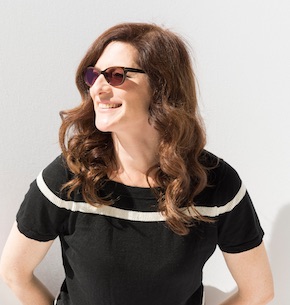
Stef Penney grew up in Edinburgh. She has degrees in Philosophy and Theology and Film and TV, and was selected for the Carlton Television New Writers Scheme and has since written and directed two short films. Her previous novels are The Tenderness of Wolves, The Invisible Ones and Under a Pole Star. She has also written extensively for radio, including adaptations of Moby-Dick, The Worst Journey in the World, and a third installment of Peter O’Donnell’s Modesty Blaise series. The Beasts of Paris is published by Quercus in hardback, eBook and audio download.
Read more
stefpenney.co.uk
@QuercusBooks
Author photo by Chris Close

